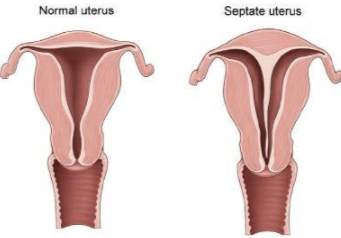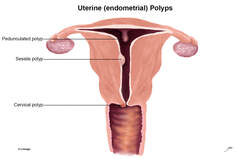|
Dr. Gil Wilshire performs an open surgery to remove a fibroid that was causing pain, heavy irregular bleeding, and infertility. The ability to remove these fibroid tumors without damaging the endometrium (cavity) of the uterus is clearly demonstrated.
0 Comments
The uterus is normally triangle-shaped and hallow on the inside, with a septum, there is a dip inside, called a septum, and it can cause miscarriages and other reproductive problems. In today's video, Dr. Wilshire performs surgery on a young woman who has a septum in her uterus.
Hello. This is Dr. Wilshire from Missouri Fertility, Columbia, Missouri. Today, we're doing a hysteroscopy on a young woman who has been having abnormal bleeding. She also has polycystic ovarian syndrome. She happens to be from Central America and has a lot of Native American blood. You can see in her overall body shape that she has very thin thighs. She carries her weight in the mid-section, and this makes her at very high risk for growing endometrial polyps. Polyps grow in the uterus when a woman is not having regular ovulation and when she has very high sugar levels and high insulin levels that come from the typical American high-carbohydrate diet. She's been having abnormal bleeding in addition to infertility; so, on ultrasound earlier, we saw a thickened irregular lining of her uterus.
We are looking at her uterus right now with a hysteroscope, and you can see right here that she has some very large polyps, enormous polyps, in the cavity of her uterus. You can see it and we can touch it right now with the forceps. This is a polyp, and if we go past the polyp, there is---yes! Another polyp! No wonder she's been having heavy abnormal bleeding that just won't stop and a lot of cramping. Now, these polyps must come out. They have at least a 5% chance of harboring a cancer, so we are going to take them out. This is the base of this polyp. It probably has a blood vessel and a fibrous base, which means it has been around for a while. You can see how we take these out. We're going to grab the polyp and essentially tear it off the base. It may bleed a little bit, but we should be able to break it free of its connections. We'll do the same thing with the other polyp. After the polyps are removed, we are probably going to make sure her tubes are open with some wires and then she will be able to go home. This is a very quick, safe procedure--hysteroscopy—with very, very low risk. She is under anesthesia, but it is a very light anesthesia called a laryngeal mask, so she won't even have a sore throat when she wakes up—about fifteen minutes from now. This is a hysteroscopy for endometrial polyps, and we are going to get these polyps out. It's probably going to take me a little longer than this video will allow, but you can see how we are going to break off the base and then grab it with a tenaculum. Maybe we can get this polyp out during this video. You can see the base has been broken. We're going to use a little grabber instrument called a tenaculum. Now, this polyp is pretty big, and it may not want to come out through this small opening, but let's see if we can get it for this video. I'm going to twist it, which is called "roping" it up, and let's see if it will come. It may resist. It looks like we may need to clip the base with some scissors, but you get the idea. We are going to get this polyp out, and look at it under the microscope in the pathology department, and if it is cancer, we'll need to see what kind it is and treat her appropriately. Clearly, we need to get these polyps out, because that should stop her excessive bleeding. We will then manage her with carbohydrate restriction, weight loss, and medicines of the progesterone type, and this will get her back to normal, fix her bleeding, and restore her fertility. This is Dr. Wilshire of Missouri Fertility in Columbia, Missouri. I hope that was interesting for you. Thank you very much. |
�
Archives
March 2023
Categories
All
|
- About Us
-
Services
- Infertility >
- Fertility >
- Third Party Reproduction
- Reproductive Surgery
- Patient Resources >
-
Fertility Facts
>
- Age & Infertility
- Conception 101
- Endocrine Disorders
- Endometriosis
- Fallopian Tube Issues
- Female Infertility
- Infertility FAQs
- Infertility Myths
- Male Infertility
- PCOS
- Pelvic Pain
- Premature Ovarian Failure
- Recurrent Pregnancy Loss
- Secondary Infertility
- Sexually Transmitted Disease
- Unexplained Infertility
- Uterine Disorders
- IVF
- Blog
- Contact
- Patient Portal
|
|
Missouri Fertility
1506 E Broadway Suite 220 Columbia, MO 65201 [email protected] Phone: 573-443-4511 Fax: 573-443-7860 |
Patient Portal |





 RSS Feed
RSS Feed
